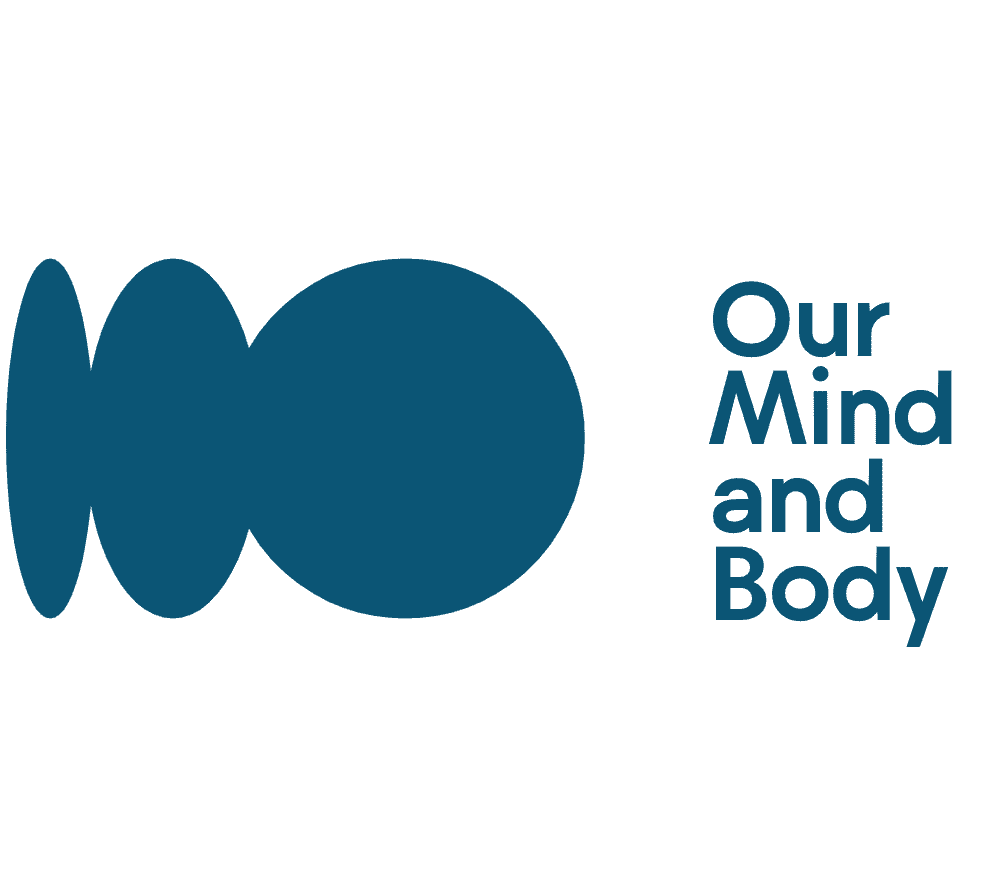Inspiration
Self-Trusting – How This Power Word Can Make You Better

Did you know that only 30% of people have self-confidence? This means that a staggering 70% of us doubt our own abilities, decisions, and gut feelings. This lack of self-confidence can hold us back from achieving our goals and living the lives we dream of.
But what exactly is self-trusting and why is it so important? Self-trusting is the belief in one’s own abilities, character, and worthiness. It involves having confidence in yourself to make decisions, take action towards your goals, and navigate through life’s challenges.
When we trust ourselves, we feel empowered to take risks and pursue what truly matters to us. In this article, I will delve into the reasons why self-trusting is crucial for personal growth and how cultivating this trait can help you become a better version of yourself.
Key Takeaways
- Building self-trust is crucial for personal growth and success.
- Self-compassion and support system are important in building self-trust.
- Embracing challenges, uncertainty, change, and growth mindset is essential in developing self-trust.
- Celebrating small victories, setting achievable goals, and consistency are effective strategies to build self-trust.
Definition of Self-Trusting
Self-trusting is all about having confidence in yourself and your abilities, so you can tackle any challenge that comes your way. When we trust ourselves, we’re more likely to take risks and pursue our dreams without fear of failure.
The benefits of self-trusting are numerous. It can help us become more resilient, optimistic, and proactive. One of the best ways to build self-trusting habits is by setting achievable goals and working towards them consistently. This helps us develop a sense of accomplishment, which in turn boosts our confidence.
We can also practice self-compassion by being kind to ourselves when we make mistakes or face setbacks. This means acknowledging our flaws without judging ourselves harshly. Incorporating positive affirmations into our daily routine can also help us build self-trust. Saying phrases like "I’m capable" or "I trust myself" regularly can reinforce this belief within us.
Ultimately, building self-trust takes time and effort but the rewards are worth it as it allows us to live a more fulfilling life with greater confidence in ourselves. Trusting yourself is crucial for success not only in personal but professional life as well.
In the subsequent section about the importance of self-trusting, I’ll discuss how this power word can improve performance at work and lead to better decision-making skills.
Importance of Self-Trusting
Believing in oneself is crucial for personal growth, as the saying goes ‘whether you think you can or think you can’t, you’re right.’ Self-trusting means having confidence in one’s own abilities and decisions. It is a powerful tool that can make us more resilient and help us achieve our goals.
Benefits of self-trusting include increased self-esteem, improved decision-making skills, and better relationships with others. When we trust ourselves, we are more likely to take risks and try new things. We also become less dependent on others for validation or approval. However, there are also drawbacks to self-trusting. Overconfidence can lead to arrogance and poor judgment.
So how do we build self trust? One way is by setting achievable goals and following through on them. Another way is by being kind to ourselves and acknowledging our strengths and weaknesses. We should also avoid negative self-talk and focus on positive affirmations instead. Building a support system of trusted friends or family members can also help boost our confidence.
Moving forward into the next section about common barriers to self-trusting, it’s important to recognize that building trust in oneself isn’t always easy. There may be internal obstacles such as fear of failure or past experiences that have damaged our sense of worth. By identifying these barriers, we can work towards overcoming them and becoming more confident in ourselves.
Common Barriers to Self-Trusting
As someone who’s struggled with self-trust, I know firsthand that there are common barriers that can get in the way of fully embracing this power word.
Fear of failure can make it hard to take risks and trust our own instincts.
The need for approval from others can leave us second-guessing ourselves and seeking validation outside of ourselves.
Comparison and perfectionism can lead to a constant feeling of inadequacy, making it difficult to trust in our own abilities and decisions.
But recognizing these barriers is the first step towards overcoming them and building a stronger sense of self-trust.
Fear of Failure
Don’t let the fear of failure stop you from taking risks and pursuing your dreams. I know that fear can be a paralyzing force, but overcoming it is essential to building confidence in yourself.
It’s natural to feel apprehensive about trying new things or stepping outside of your comfort zone, but those moments of discomfort are where growth happens. When we push ourselves beyond what we think we’re capable of, we prove to ourselves that we’re stronger than our fears.
Remember, failure isn’t something to be ashamed of; it’s an opportunity to learn and grow. Every successful person has faced setbacks along the way, but they didn’t let those setbacks define them. Instead, they used them as fuel to keep going and improve themselves.
So take that leap of faith and trust yourself – you might just surprise yourself with what you’re capable of achieving.
Moving on from the fear of failure, another common barrier to self-trusting is the need for approval.
Need for Approval
You can’t let the opinions of others control your actions and decisions, especially when it comes to pursuing your own goals and dreams. Needing approval from others is a natural human instinct, but if you constantly seek validation from others, you may find yourself feeling unfulfilled.
Overcoming neediness is crucial in building inner confidence, which is essential in achieving success. Building inner confidence involves trusting yourself and your abilities. It means acknowledging that you are capable of making decisions and taking actions without seeking constant reassurance from others. When you learn to trust yourself, you’ll be able to make choices that align with your values and goals.
Remember that seeking approval from others doesn’t always lead to happiness or success. Instead, focus on believing in yourself and your ability to achieve great things.
Now that we’ve talked about the importance of overcoming neediness and building inner confidence, let’s discuss how comparison and perfectionism can hold us back in our journey towards self-trusting.
Comparison and Perfectionism
It can be challenging to overcome the obstacles of comparison and perfectionism when striving for success. In today’s society, we’re constantly bombarded with images of perfection through social media, advertisements, and other forms of media. As a result, it’s easy to compare ourselves to others and feel inadequate.
Comparing yourself to others is a toxic habit that only leads to negative emotions.
Additionally, many people have an innate desire for perfectionism which can lead to anxiety, self-doubt, and even depression. Perfectionism can be paralyzing and prevent you from taking action.
Self-trusting allows you to trust your own intuition and decisions.
However, overcoming these obstacles is crucial in order to achieve true success. By practicing self-trusting and learning how to let go of the need for approval or validation from others, we can focus on our own growth without being held back by external factors.
Furthermore, research has shown that self-trusting plays an important role in mental health as it promotes resilience and reduces stress levels.
Now that we understand the importance of overcoming comparison and perfectionism through self-trusting, let’s dive into some practical ways we can cultivate this power word in our lives.
How to Cultivate Self-Trusting
To cultivate self-trusting, start by setting small goals and celebrating your progress along the way.
Mindfulness practices can also help you become more aware of your thoughts and feelings, so that you don’t get caught up in negative self-talk.
When you make a mistake or face a setback, seek feedback from others to gain a different perspective on the situation.
It’s important to remember that building self-trust takes time and effort. You may encounter setbacks along the way, but it’s crucial to keep pushing forward and believe in yourself.
By setting realistic goals for yourself and celebrating even small victories, you’ll gradually build up your confidence and trust in your own abilities.
Developing a growth mindset is another key component of cultivating self-trust.
Rather than seeing challenges as roadblocks or failures as permanent setbacks, try to view them as opportunities for learning and growth.
By embracing this mindset, you’ll be better equipped to handle obstacles with resilience and determination.
Develop a Growth Mindset
I believe that developing a growth mindset is crucial for achieving self-trust and personal growth.
Embracing challenges and learning opportunities can help us overcome our limitations and expand our abilities.
Seeing failure as a stepping stone rather than a setback can provide valuable lessons and lead to future success.
By believing in our ability to improve, we can cultivate the confidence needed to pursue our dreams and goals with determination.
Embrace Challenges and Learning Opportunities
By embracing challenges and seeking out learning opportunities, you’ll improve your overall self-trust and confidence. It can be scary to face new challenges or put ourselves in uncomfortable situations, but that’s where growth happens.
Overcoming fear and embracing discomfort is key to developing a growth mindset and building self-trust. Challenges and learning opportunities may come in many forms – it could be trying a new hobby, taking on a project at work that scares you, or even just having a difficult conversation with someone.
The important thing is to not shy away from these experiences, but instead lean into them with an open mind. By doing so, you’ll build resilience and trust in yourself that you can handle whatever comes your way.
And remember, failure is not the end – it’s simply a stepping stone towards success.
See Failure as a Stepping Stone
Viewing failure as a stepping stone is crucial for personal growth and development. Overcoming failure isn’t an easy feat, but building resilience through it can lead to significant improvements in one’s life.
Here are three ways that helped me see failure as an opportunity:
-
Reframe the mindset: Instead of dwelling on what went wrong, try to focus on what could be learned from the experience. This shift in perspective can help turn a negative situation into a positive learning opportunity.
-
Accept imperfection: Nobody’s perfect, and everyone makes mistakes. It’s essential to accept that failures will happen along the way and embrace them as part of the process.
-
Take action: After reflecting on the mistake or setback, it’s time to take action and make improvements where necessary. Taking steps towards progress can help build confidence and prevent future setbacks.
Believing in your ability to improve is key for personal growth and self-trusting success.
Believe in Your Ability to Improve
Believing in one’s capacity to improve is vital for achieving personal growth and reaching success. It can be easy to doubt ourselves, especially when faced with challenges or setbacks. However, overcoming doubt and building self-confidence is key to unlocking our potential.
When we believe in our ability to improve, we become more resilient and better at adapting to change. We’re willing to take risks and try new things, knowing that even if we fail, we can learn from the experience and continue growing. This mindset also allows us to focus on progress rather than perfection, recognizing that improvement takes time and effort. By believing in ourselves, we can push beyond our comfort zones and achieve things we never thought possible.
As I move forward in my personal growth journey, I know that practicing self-compassion will be an important part of continuing this positive trajectory.
Practice Self-Compassion
With a little self-compassion, we can nurture ourselves like a gentle rain nourishes a parched garden. When we practice self-compassion, we give ourselves permission to make mistakes and learn from them. This helps us overcome self-doubt and cultivate a growth mindset.
Self-compassion involves treating ourselves with kindness and understanding when things don’t go as planned. It means acknowledging our imperfections and recognizing that they don’t define us as people. By practicing self-compassion, we can break free from the trap of negative self-talk that often holds us back from achieving our goals.
When we are kind to ourselves, we create space for personal growth and development. Self-compassion allows us to view failure as an opportunity for learning rather than something to be ashamed of. By embracing this mindset, we become more resilient and better equipped to navigate life’s challenges.
And when times do get tough, surrounding ourselves with supportive people can help keep us on track towards success.
Surround Yourself with Supportive People
Having a network of supportive people around you can greatly increase your chances of reaching your goals and overcoming obstacles. It’s important to find individuals who encourage and uplift you, rather than those who bring you down or make you doubt yourself. Building a community of supportive people takes time and effort, but it’s worth it in the end.
One key aspect to consider when building a support system is setting boundaries. It’s important to communicate what kind of support you need and what type of behavior is not acceptable. This can help create a safe and positive environment where everyone feels respected and valued. Additionally, finding communities that share similar interests or goals can be incredibly helpful in providing motivation, inspiration, and accountability.
In summary, having a network of supportive people is crucial for personal growth and success. By setting boundaries and finding communities that align with our values, we can surround ourselves with individuals who will cheer us on during both our successes and failures. With this kind of support system in place, we are better equipped to take action towards achieving our goals.
Take Action Towards Your Goals
Taking action towards your goals can be a challenging yet rewarding process, but it requires determination and consistency. Overcoming procrastination is the first step towards achieving success. It’s important to break down your goals into smaller, achievable tasks to avoid feeling overwhelmed.
Write down what you need to do and when you need to do it by, then hold yourself accountable for completing each task on time. Setting achievable goals is also crucial in taking action. If your goal is too big or unattainable, it may discourage you from even trying.
Start with small steps that will help you build momentum towards your ultimate goal. Celebrate each accomplishment along the way, no matter how small it may seem. Remember that taking action towards your goals isn’t always going to be easy. There may be setbacks and obstacles along the way, but don’t give up!
Consistency is key in building self-trust and achieving success. Keep pushing forward and believe in yourself. In order to truly embrace uncertainty and change, we must first take action towards our goals with determination and consistency.
By overcoming procrastination and setting achievable goals, we start building trust within ourselves that we can accomplish anything we set our minds to. Let’s continue this journey of growth together as we move onto the next step of embracing uncertainty and change in our lives.
Embrace Uncertainty and Change
Embracing uncertainty and change allows us to adapt and grow in unforeseen ways, opening up endless possibilities for our future selves. It may seem daunting at first, but the benefits of embracing uncertainty are numerous.
By being open to new experiences, we increase our creativity and problem-solving skills. We become more resilient and adaptable, which helps us navigate life’s ups and downs with greater ease.
However, the fear of change can be overwhelming. Our minds naturally resist things that are unfamiliar or uncomfortable. But when we learn to embrace uncertainty, we realize that change is inevitable and necessary for growth.
We can start by taking small steps outside of our comfort zone, gradually building confidence in ourselves as we try new things. By doing so, we develop a growth mindset that allows us to approach challenges with curiosity instead of fear.
In conclusion, embracing uncertainty and change can be scary but also incredibly rewarding. By learning to overcome our fear of the unknown, we unlock new possibilities in every aspect of our lives. When we trust ourselves enough to take risks and step into the unknown, amazing things can happen – both personally and professionally. And this is just one example of how self-trusting can make you better.
Conclusion: The Power of Self-Trusting
As I continue to embrace uncertainty and change, I realize that one of the most important things I need is self-trust. Trusting myself means trusting my abilities, decisions, and intuition. It’s not easy to do this all the time, especially when doubts and insecurities start creeping in. But as I continue to work on building my self-trust, I find that it has a powerful impact on my personal growth.
The power of self-trust lies in its ability to give me confidence in myself and my choices. When faced with difficult decisions or challenges, having faith in myself allows me to move forward with conviction. This doesn’t mean that I always make the right choice or never fail – it simply means that I trust myself enough to learn from those experiences and keep moving forward.
To build self-trust, there are a number of tips and strategies that have been helpful for me. One is practicing self-compassion; being kinder to myself when things don’t go as planned helps me avoid spiraling into negative thoughts about my abilities. Another is setting achievable goals for myself – meeting these goals reinforces my belief in what I’m capable of accomplishing. And finally, taking action despite fear or doubt can be a powerful way to overcome insecurity and build confidence in oneself.
Harnessing the power of self-trust has been an ongoing journey for me, but one that’s been well worth it. As I continue to practice building trust in myself and my abilities, I find that it positively impacts all areas of my life. By believing in ourselves more fully, we can take risks with greater ease, pursue our passions more confidently, and ultimately live more fulfilling lives.
Frequently Asked Questions
Can self-trusting lead to overconfidence or arrogance?
Oh boy, can self-trusting lead to overconfidence or arrogance? Absolutely!
As someone who’s struggled with finding the balance between self-trust and humility, I know firsthand how easy it is to let self-assurance turn into hubris. However, navigating self-trust in a team environment requires humility and empathy.
It’s important to recognize that everyone brings unique perspectives and skills to the table, and trusting oneself doesn’t mean discounting others’ contributions. Instead, it means having confidence in one’s own abilities while also valuing teamwork and collaboration.
Finding this balance takes practice, but when done right, self-trust can be a powerful tool for personal growth and success.
Is self-trusting a natural trait or can it be learned and developed?
In my opinion, the debate of nature vs. nurture applies to the trait of self-trusting as well.
While some people may have a natural inclination towards being self-trusting, I believe that it is also a trait that can be learned and developed over time.
There are both benefits and drawbacks to being self-trusting.
On one hand, having confidence in oneself can lead to increased motivation and productivity while on the other hand, it could potentially lead to overconfidence or arrogance which can harm relationships and hinder personal growth.
It’s important to find a balance between trusting oneself and seeking advice from others when necessary.
Overall, developing self-trust is an ongoing process that requires introspection, reflection, and learning from past experiences.
How does self-trusting differ from self-esteem or self-confidence?
When it comes to self-trusting vs self-doubt, the difference is clear. Self-trusting means having faith in our own abilities and decisions, while self-doubt leads to second-guessing ourselves and seeking validation from others.
As for how self-trusting differs from self-esteem or self-confidence, I believe that they’re all interconnected but not interchangeable. Self-esteem is more about our overall sense of worth and value as a person, while self-confidence is about our belief in specific skills or abilities.
Cultivating a mindset of self-trust can have numerous benefits, such as reducing stress and anxiety, increasing resilience and adaptability, and improving decision-making skills. By trusting ourselves, we’re able to take risks and pursue our goals with greater confidence and clarity.
It’s not always easy to overcome doubts and fears, but by practicing self-trust on a daily basis, we can gradually build up this powerful mindset that’ll serve us well in all areas of life.
Can self-trusting be harmful in certain situations or contexts?
Trusting myself has always been a challenge for me. While it’s important to trust my intuition and listen to my gut feelings, there have been times where I’ve trusted myself too much and ignored the advice of others.
This can be harmful in certain situations, especially when it comes to making big decisions or taking risks that could impact my life in significant ways. Learning to balance self-trust with trust in others has been a valuable lesson for me.
It’s important to recognize when I need help or guidance from someone else, and not let my own ego get in the way of making the best decision possible. Trusting myself is important, but so is trusting those around me who have different experiences and perspectives.
How can one balance self-trusting with acknowledging and learning from their mistakes?
When it comes to balancing self-trusting with acknowledging and learning from my mistakes, I’ve found that practicing self-reflection and seeking feedback are key.
Rather than blindly trusting myself in all situations, I take the time to reflect on my actions and decisions. Did they align with my values? Were there any negative consequences? This helps me gain a better understanding of where I may have gone wrong and how I can improve moving forward.
Additionally, seeking feedback from others allows me to view situations from different perspectives and learn from their experiences as well.
It’s important to remember that making mistakes is a natural part of growth and development, but actively working towards improvement is what ultimately makes us better individuals.
Conclusion
In conclusion, self-trusting is a powerful tool that can help you improve your life in many ways. By trusting yourself, you can overcome common barriers such as fear, doubt, and insecurity. You can develop a growth mindset, surround yourself with supportive people, take action towards your goals, and embrace uncertainty and change.
Imagine a world where you’re confident in your abilities and trust yourself to make the right decisions. A world where you don’t let fear or doubt hold you back from pursuing your dreams. This is the power of self-trusting. It allows you to live life on your own terms, to take risks, and to grow as a person.
So, if you want to unlock the full potential of your life, start cultivating self-trusting today. Believe in yourself and trust that you have what it takes to achieve anything you set your mind to. With time and practice, self-trusting will become second nature, helping you navigate through life’s challenges with more ease and confidence than ever before.
Meet Kiran, the guiding light of wisdom behind the empowering content at OurMindAndBody.com. As a talented and compassionate writer, Kiran weaves words with grace and insight, sharing profound knowledge and practical advice to inspire positive transformations in the lives of readers.
With a background in psychology and a deep-rooted passion for well-being, Kiran brings a unique blend of expertise and empathy to her writing. Her journey into the realm of mindfulness, meditation, and yoga began as a personal quest for self-discovery and healing. Having experienced the profound benefits of these practices firsthand, Kiran is committed to empowering others to embark on their own journeys of self-exploration and growth.
Inspiration
The Significance Of Blue Green Aura: Creativity, Healing, And Spiritual Connection

In a world filled with powerful energies, the **teal aura** shines bright with profound significance. Like a shimmering illusion, it represents a unique blend of creativity, healing power, and spiritual connection. This aura is evidence of our natural ability to tap into our higher consciousness and unlock our hidden talents. Discover the magic within and unleash your true potential!
As I delve into the depths of this mystical aura, I invite you to join me on a journey of self-discovery and exploration. Together, we shall uncover the hidden treasures that lie within the blue green aura, illuminating paths of creativity, healing, and spiritual connection.
Key Takeaways
- Blue green aura is associated with creativity, calmness, and balance.
- It indicates spiritual development, psychic ability, and healing powers.
- Blue green aura signifies a strong connection to water and nature.
- It reflects a need for emotional healing and forgiveness.
What does it signify?
The blue green aura signifies my strong spiritual connection, intuition, and psychic abilities. It is associated with the throat chakra governing communication and spiritual expression.
It is a beautiful blend of blue and green, representing the harmonious balance between creativity and healing. When my aura shines with this enchanting hue, I feel a deep sense of calmness and tranquility, as if I am one with nature.
It is a reminder of my capacity to tap into my creative potential and bring forth my unique gifts to the world. This aura also reflects my desire to help others and be a source of healing and compassion.
Through my blue green aura, I am reminded to embrace my intuition and use it as a guiding force in my spiritual journey.
Characteristics and meanings
When exploring the characteristics and meanings of a blue-green aura, I find it fascinating to discover its association with calmness, balance, and a strong connection to nature.
It is truly remarkable how this aura signifies not only spiritual development and psychic abilities but also healing powers. The blue-green aura enhances creativity, intuition, empathy, and good listening skills, making it a truly harmonious and positive aura to possess.
It signifies a need for emotional healing and forgiveness, urging us to delve deep within ourselves and find inner peace. This aura also reflects our desire to help others and our compassion towards them.
With its strong connection to the throat chakra, it governs our communication and spiritual expression, allowing us to enhance our spiritual connection and make a profound impact on the world around us.
Embracing the blue-green aura and its characteristics can lead us to a path of self-discovery, growth, and enlightenment.
Benefits and healing abilities
Exploring the benefits and healing abilities of the blue-green aura feels like stepping into a world of limitless possibilities and unlocking my true potential. It is a remarkable gift that brings spiritual development, psychic ability, and healing powers into my life.
The blue-green aura connects me deeply with nature and the soothing energy of water. It promotes emotional balance, encouraging me to seek healing and forgiveness within myself. This aura enhances my creativity and allows me to express my true self with compassion and empathy.
It strengthens my intuition and listening skills, enabling me to connect with others on a deeper level. The blue-green aura is a gateway to spiritual connection, enhancing my communication and spiritual expression through the throat chakra.
By embracing the techniques and tools associated with this aura, I can achieve a harmonious and positive aura, reaping the benefits of a balanced and fulfilled life.
Rarity and color changes
Embracing the rarity and fluidity of my blue-green aura, I am fascinated by its ever-changing colors and the reflection of my personal growth over time. Each hue that dances within my aura tells a story of my emotional state and spiritual development. It is a beautiful reminder of the journey I have embarked upon, guiding me towards a deeper understanding of myself and the world around me.
Within the vibrant tapestry of my blue-green aura, I find solace and inspiration. Its shifting shades remind me that change is a natural part of life, and that growth comes from embracing the ebb and flow of existence. My aura reflects the healing energies I possess, and the desire within me to help others on their own paths of self-discovery.
As I continue to evolve, my aura serves as a compass, guiding me towards emotional balance and a greater connection to nature. It is a testament to the power of self-reflection and the infinite possibilities that lie within.
Techniques for seeing your aura
Engaging in the practice of gazing softly into a mirror, I am able to catch glimpses of the colorful energy that surrounds me. It’s a fascinating experience to witness the ever-changing hues of my aura.
As I focus my attention and open my awareness, I am greeted by the vibrant shades of blue and green that dance and intertwine. These colors symbolize my creativity, healing abilities, and spiritual connection.
Through this practice, I am reminded of the immense power and potential that resides within me. It is a beautiful reminder that I possess the gifts of intuition, empathy, and good listening skills. Seeing my aura in this way allows me to tap into these qualities and express them fully in my daily life.
It is a truly inspiring and insightful experience that deepens my understanding of myself and my connection to the world around me.
Spiritual connection and chakra association
While practicing techniques to see my own aura, I am amazed by the strong sense of spiritual connection and the association with the throat chakra. It is truly a breathtaking experience to witness the vibrant blue green hues that radiate from within me.
This connection to the throat chakra fills me with a deep sense of authenticity and self-expression. It empowers me to communicate my truth with clarity and confidence. I feel a surge of creativity and inspiration flow through me, igniting my passion for artistic endeavors.
This connection to the blue green aura also brings a profound healing energy, allowing me to release emotional blockages and find balance within myself. It reminds me of the importance of nurturing my spiritual well-being and embracing my unique gifts.
Through this exploration, I have discovered a deeper understanding of myself and a renewed sense of purpose.
Incorporating techniques and tools
Incorporating various techniques and tools has allowed me to gain a deeper understanding of the intricacies and dynamics of my own aura.
Through this journey of self-discovery, I have come to realize the immense power and potential that lies within the blue-green aura.
By utilizing these techniques, such as staring at my hands against a white background or using a mirror with a soft gaze, I have been able to witness the vibrant hues and energy that radiate from my being.
These practices have not only enhanced my spiritual connection, intuition, and psychic abilities but also strengthened my communication and expression through the throat chakra.
By embracing these tools and techniques, I have unlocked a world of creativity, healing, and spiritual connection, allowing me to tap into the limitless potential of my blue-green aura.
Enhancing and balancing your aura
To enhance and balance my aura, I focus on practicing meditation and mindfulness techniques.
By dedicating time each day to quiet my mind and connect with my inner self, I am able to create a harmonious and positive energy field around me.
During meditation, I visualize a vibrant blue green light surrounding my body, cleansing and revitalizing my aura.
I also incorporate deep breathing exercises, allowing the healing energy to flow freely through my chakras.
Mindfulness plays a crucial role in maintaining balance, as it helps me stay present and aware of my thoughts, emotions, and energy.
I actively choose to surround myself with positive influences, such as nature, music, and uplifting affirmations.
Through these practices, I am able to enhance my aura, embracing my creativity, healing abilities, and spiritual connection.
Frequently Asked Questions
How does the blue green aura differ from other aura colors in terms of significance and meaning?
The blue green aura stands out from other aura colors due to its significance and meaning. It represents creativity, healing, and spiritual connection. Its calming and balanced nature enhances intuition, empathy, and communication, making it a powerful and unique aura to possess.
Can the blue green aura be associated with any specific personality traits or behaviors?
The blue green aura can be associated with personality traits and behaviors such as creativity, intuition, empathy, and good listening skills. It reflects a balanced and harmonious nature, with a strong spiritual connection and a desire to help others.
Are there any specific spiritual practices or exercises that can help enhance and strengthen the blue green aura?
There are specific spiritual practices and exercises that can enhance and strengthen the blue green aura. Meditations, energy healing techniques, and connecting with nature can all help deepen the spiritual connection and amplify the healing and creative energies of the aura.
Is it possible for someone to have a blue green aura temporarily, or is it a permanent trait?
Yes, it is possible for someone to temporarily have a blue green aura. Our auras can change based on our emotional state, health, and spiritual development. It reflects personal growth and can vary over time.
How does the blue green aura interact with other aura colors, and what does it indicate when multiple colors are present in an aura?
When multiple colors are present in an aura, it indicates a dynamic and complex energy. The blue green aura, combined with other colors, can signify a harmonious blend of creativity, healing, spiritual connection, and other unique qualities within an individual’s energy field.
Say hello to Cypress, the soulful wordsmith behind the insightful articles at OurMindAndBody.com. Cypress is a gifted writer who weaves words with grace and precision, using language as a powerful tool to inspire, heal, and uplift the spirits of readers.
With a background in literature and a passion for personal growth, Cypress brings a unique perspective to the world of well-being and spirituality. Having experienced the transformative effects of meditation and yoga firsthand, Cypress is deeply connected to the essence of these practices and their potential to enrich lives.
Inspiration
Transforming Patient Experience: Trends In Healthcare

In the ever-evolving realm of healthcare, patient experience is undergoing a significant transformation. Like a compass guiding us through uncharted territories, emerging trends are shaping our approach to and interactions with healthcare.
From the rise of self-diagnosis and its implications on accuracy, to the surging demand for telehealth services amidst the pandemic, the industry is witnessing a shift towards patient-centered care.
This article delves into the key trends that are revolutionizing the patient experience, exploring concepts such as empathy, telehealth access, behavioral health, integrated medical records, predictive analytics, and the role of advanced practice clinicians.
Join us as we navigate this transformative path, unraveling the future of healthcare.
Key Takeaways
- Self-diagnosis prevalence and the need for empathetic treatment approaches to reduce it
- Increase in telehealth services during the pandemic and its impact on access to healthcare treatments
- Importance of behavioral health and mental well-being in overall patient care
- Integrating medical records for coordinated care and the benefits of a central location for patient healthcare history
Self-Diagnosis and Empathy
The pre-existing knowledge highlights the prevalence of self-diagnosis and the need for empathetic treatment approaches in healthcare.
Self-diagnosis is becoming increasingly common, with individuals turning to the internet for solutions, despite the lack of scientific evidence supporting these practices.
There are various reasons why people engage in self-diagnosis, including convenience, cost-saving, and lack of access to healthcare professionals. However, this trend poses risks and can lead to misdiagnosis and delayed or inadequate treatment.
To address this issue, empathetic treatment approaches are crucial. By building long-term relationships between healthcare professionals and patients, trust can be established, and patients can feel more comfortable seeking professional medical advice.
Empathy, understanding, and effective communication are key components of these approaches, helping to reduce self-diagnosis and ensure patients receive appropriate care.
Telehealth and Access
Telehealth services have experienced a significant increase in usage due to the physical contact restrictions imposed during the pandemic. This shift in healthcare delivery has had a profound impact on access to healthcare and has allowed for the continuation of care while minimizing the risk of exposure to the virus. The effectiveness of telehealth in providing remote patient monitoring has been widely recognized, enabling healthcare professionals to monitor patients’ conditions and provide necessary interventions.
Key points about telehealth and access include:
-
Overcoming hesitancy: Telehealth has helped overcome hesitancy among patients to visit hospitals or healthcare facilities due to fear of contracting the virus.
-
Wider care coverage: Telehealth has expanded access to healthcare services, particularly for patients in remote areas or with limited mobility, who may have otherwise faced challenges in accessing care.
-
Triage and patient support: Telehealth platforms have played a crucial role in triaging patients, answering their questions, and providing guidance, ensuring that appropriate care is delivered in a timely manner.
-
Reducing issues with self-diagnosis: Telehealth has also helped reduce the prevalence of self-diagnosis by providing patients with professional medical advice and guidance, reducing the reliance on unverified internet sources.
Overall, telehealth has proven to be an effective tool in improving access to healthcare and addressing various healthcare needs, particularly during times of physical contact restrictions.
Behavioral Health and Well-being
Behavioral health has emerged as a critical aspect of comprehensive healthcare, with a growing recognition of the importance of addressing mental well-being for overall patient care. Mental health awareness has increased significantly in recent years, leading to a reduction in the stigma surrounding behavioral health conditions. People are now more open to discussing their mental health and seeking appropriate treatments. Healthcare professionals are implementing strategies to improve mental health patient care, such as providing support for stress relief and promoting mental well-being. Additionally, the role of Advanced Practice Clinicians (APCs) in acknowledging the importance of behavioral health is crucial. They play a key role in addressing mental health concerns, offering tools and resources for stress relief, and advocating for the integration of mental health care into overall patient care plans. By focusing on mental well-being, healthcare providers can ensure comprehensive and holistic patient care.
| Mental Health Awareness | Stigma Reduction |
|---|---|
| – Increased recognition of mental health importance | – Reduction in stigma surrounding behavioral health conditions |
| – Openness in discussing mental health | – Encouraging seeking appropriate treatments |
| – Strategies to improve mental health patient care | – Role of APC in acknowledging importance of behavioral health |
| – Support for stress relief and mental well-being | – Promoting integration of mental health care into overall patient care plans |
Integrating Medical Records
Integrating medical records plays a crucial role in improving coordination and continuity of care for patients. Establishing a centralized database allows healthcare professionals to have access to comprehensive and up-to-date patient information, leading to more informed and efficient decision-making. It enables a holistic understanding of the patient’s healthcare history, facilitating better care coordination and reducing the risk of medical errors.
However, privacy concerns in data integration must be addressed to ensure patient confidentiality and data security. Safeguards, such as strict access controls and encryption, should be implemented to protect sensitive patient information. Additionally, healthcare organizations must comply with legal and ethical standards to maintain patient trust and confidence.
By integrating medical records, healthcare providers can enhance the quality of care, improve patient outcomes, and promote a more patient-centered approach to healthcare delivery.
Predictive Analytics and Prevention
Predictive analytics has emerged as a valuable tool in healthcare, enabling precise risk assessment and the generation of personalized preventative care treatments based on individual patient needs. This innovative approach utilizes advanced algorithms and data analysis to identify risk factors and predict potential health outcomes. By leveraging large datasets, healthcare providers can develop targeted strategies to prevent the onset or progression of diseases, ultimately improving patient health outcomes.
Some key features and benefits of predictive analytics in healthcare include:
-
Precise risk assessment: Predictive analytics helps healthcare professionals accurately evaluate a patient’s risk of developing specific conditions or experiencing adverse health events.
-
Potential treatments based on risk factors: By analyzing patient data, predictive analytics can identify appropriate interventions and treatment plans tailored to an individual’s specific risk factors.
-
Improving patient health through predictive analytics: By implementing personalized preventative care strategies, healthcare providers can proactively address potential health issues, leading to improved patient outcomes and reduced healthcare costs.
-
Importance of preventative care treatments: Predictive analytics emphasizes the significance of preventive measures, enabling healthcare providers to focus on proactive interventions and early detection, ultimately promoting better overall health and well-being.
Pandemic’s Impact on Healthcare
The previous subtopic discussed the importance of predictive analytics and preventative care in healthcare. Now, let’s shift our focus to the impact of the pandemic on the healthcare industry and the lessons learned from it. The COVID-19 pandemic has exposed weaknesses, disparities, and inefficiencies within the healthcare system, highlighting the urgent need for support and proper care treatments. The healthcare industry has faced numerous challenges, including overwhelmed healthcare facilities, shortages of essential supplies, and the need for innovative solutions to provide care while minimizing physical contact. These challenges have prompted the industry to reevaluate and improve its practices in 2022. Lessons learned from the pandemic include the importance of preparedness, the need for effective communication and collaboration, and the value of leveraging technology, such as telehealth, to ensure access to healthcare services.
Patient Experience Trends
In the evolving landscape of healthcare, patient-centered care remains a key focus. A recent survey revealed that 87% of healthcare organizations prioritize patient satisfaction as a top strategic objective. This emphasis on patient experience has led to the emergence of several trends aimed at transforming the way healthcare is delivered.
-
Patient satisfaction: Healthcare organizations are increasingly recognizing the importance of patient satisfaction in delivering high-quality care. This involves providing personalized care that meets the unique needs and preferences of individual patients.
-
Personalized care: Tailoring healthcare services to the specific needs of each patient is gaining prominence. This includes customized treatment plans, effective communication, and involvement in decision-making processes.
-
Improved communication: Effective communication between healthcare providers and patients is crucial for enhancing the patient experience. This includes clear and concise information sharing, active listening, and addressing patient concerns and questions promptly.
These trends reflect a shift towards patient-centered care, where the focus is on delivering personalized, high-quality healthcare that prioritizes patient satisfaction.
Role of APC in Addressing Trends
APC plays a vital role in addressing and adapting to the changing landscape of patient-centered care. Supporting patients in their healthcare journey, APCs focus on various aspects, including self-diagnosis, behavioral and mental health, stress relief, and coordinated care.
APCs provide valuable tools and resources to help patients navigate the challenges of self-diagnosis, promoting the importance of seeking professional medical advice.
Additionally, APCs recognize the significance of behavioral and mental health in overall well-being, offering support and strategies to improve mental health patient care.
They also contribute to establishing a central location for coordinated care, facilitating the integration of medical records and ensuring a comprehensive understanding of the patient’s healthcare history.
By emphasizing the importance of preventative care treatments, APCs play a crucial role in promoting and delivering high-quality patient-centered care.
Impact of Telehealth on Access
Telehealth has revolutionized access to healthcare by expanding the reach of medical services and bridging the gap between patients and healthcare providers. It has played a crucial role in overcoming hesitancy among patients to visit hospitals and clinics, particularly during the pandemic when physical contact restrictions were in place.
By offering remote consultations and virtual visits, telehealth has provided a safe and convenient alternative for patients to receive medical care. Additionally, telehealth has significantly expanded care coverage by reaching patients in remote or underserved areas who may have limited access to healthcare facilities. It has improved healthcare accessibility for individuals with intricate needs, such as those requiring specialized services or living in rural areas.
Through telehealth, patients can easily connect with healthcare professionals, receive triage services, and have their questions answered, reducing the reliance on self-diagnosis and promoting more accurate and personalized care.
Importance of Behavioral Health
The recognition and prioritization of behavioral health is akin to tending to the roots of a tree; by addressing mental well-being, a strong foundation is established for overall health and resilience. Changing societal attitudes have led to an increasing openness in discussing mental health, encouraging individuals to seek treatment for mental health conditions.
Strategies for treatment and support for mental health patients have become essential in healthcare settings. Healthcare professionals, including Advanced Practice Clinicians (APCs), play a crucial role in acknowledging the importance of behavioral health and providing the necessary support for stress relief and mental well-being. This includes implementing evidence-based interventions such as therapy, counseling, and medication management.
By incorporating these strategies, patients can receive the comprehensive care they need, leading to improved overall health outcomes and quality of life.
Overall Transformation in Healthcare
Overall, the healthcare industry is undergoing a significant shift and embracing new approaches and strategies to improve patient care and outcomes.
One of the key aspects of this transformation is the digitalization of healthcare services, known as digital transformation. This involves the integration of technology and data to enhance communication, streamline processes, and improve access to care.
Additionally, there is a growing emphasis on adopting a patient-centered approach, which involves actively involving patients in their care decisions, tailoring treatments to their specific needs, and prioritizing their overall well-being. This shift towards patient-centered care recognizes the importance of treating patients as individuals with unique preferences and circumstances.
By incorporating digital transformation and a patient-centered approach, healthcare providers aim to enhance the overall patient experience, promote better health outcomes, and empower patients to take an active role in managing their own health.
Frequently Asked Questions
What are some potential risks or drawbacks of self-diagnosis?
Potential risks and limitations of self-diagnosis include inaccurate or incomplete information, misinterpretation of symptoms, delay in seeking professional help, exacerbation of health conditions, and reliance on unproven remedies or treatments.
How does telehealth specifically accommodate patients with complex or intricate medical needs?
Telehealth innovations have revolutionized healthcare by providing personalized care to patients with complex or intricate medical needs. Through virtual consultations and remote monitoring, telehealth ensures that patients receive the specific attention and treatments required for their unique conditions.
Are there any specific strategies or interventions that have been found to be effective in improving mental health patient care?
Effective strategies and interventions for improving mental health patient care include psychotherapy, medication management, peer support programs, and cognitive-behavioral therapy. These approaches have been shown to reduce symptoms, enhance coping skills, and improve overall well-being.
How does the integration of medical records contribute to better-coordinated care for patients?
The integration of medical records contributes to better-coordinated care for patients by providing a central location for healthcare professionals to access and share patient information. This improves communication, reduces errors, and allows for a more comprehensive understanding of the patient’s healthcare history. Integration benefits include improved care coordination and patient outcomes.
Can you provide examples of how predictive analytics have been used to improve patient health outcomes?
Predictive analytics in healthcare have been used to improve patient health outcomes by providing precise risk assessments, identifying potential treatments based on risk factors, and generating personalized healthcare plans. This helps in preventing diseases and promoting better patient health.
Say hello to Cypress, the soulful wordsmith behind the insightful articles at OurMindAndBody.com. Cypress is a gifted writer who weaves words with grace and precision, using language as a powerful tool to inspire, heal, and uplift the spirits of readers.
With a background in literature and a passion for personal growth, Cypress brings a unique perspective to the world of well-being and spirituality. Having experienced the transformative effects of meditation and yoga firsthand, Cypress is deeply connected to the essence of these practices and their potential to enrich lives.
Inspiration
The Timeless Elegance Of The Rolex Cosmograph Daytona

What makes a watch truly classic? Is it the elegance of its design, its association with iconic figures, or the lasting quality and craftsmanship that stands the test of time?
The Rolex Cosmograph Daytona encompasses all of these qualities and more. With its roots in the glamorous era of the 60s, this luxury timepiece captures the essence of sophistication and adventure.
From its association with Hollywood legends to its status as a symbol of luxury and confidence, the Daytona stands as a testament to the enduring allure of Rolex.
Key Takeaways
- The Rolex Cosmograph Daytona represents the glamour and fast life of the 60s and is associated with iconic film stars like Paul Newman and Steve McQueen.
- The watch embodies the spirit of a sporty and adventurous lifestyle and is an ideal companion for outdoor activities like sailing.
- The design and craftsmanship of the Rolex Cosmograph Daytona are exceptional, with a timeless design, durable Rolesor material, and scratch-proof sapphire crystal.
- The Rolex brand has a legacy of dominance and is known for its attention-commanding design and quality. The Cosmograph Daytona is considered a luxurious timepiece and can be viewed as an investment piece that retains value and can be passed down as a family heirloom.
Story and Glamor
The story and glamour of the Rolex Cosmograph Daytona has been shaped by its association with iconic film stars, such as Paul Newman and Steve McQueen, as well as its namesake, Daytona Beach in Florida, embodying a sporty and adventurous lifestyle.
The allure of vintage watches is undeniable, and the Rolex Cosmograph Daytona has become a coveted piece in the world of horology. With its timeless design and exceptional craftsmanship, the Daytona has influenced pop culture and has become a symbol of prestige and luxury.
Its association with film stars and its connection to the glamorous world of car racing have further enhanced its desirability. The Daytona’s legacy as a watch that represents the spirit of the 60s and embodies an active lifestyle has solidified its place as a timeless and elegant timepiece.
Association with Icons
Associated with legendary figures in the entertainment industry, the Rolex Cosmograph Daytona has become synonymous with an era of glamour and success. This iconic timepiece has garnered a cult following due to its celebrity endorsements and iconic status.
Hollywood legends like Paul Newman and Steve McQueen have been seen sporting the Daytona, further enhancing its allure and desirability. The watch exudes a sense of sophistication and exclusivity, capturing the essence of the high life. With its sleek design and impeccable craftsmanship, the Daytona has become a symbol of status and achievement, appealing to individuals who strive for greatness.
Its association with these iconic figures adds a layer of prestige and charm, making it a coveted timepiece among watch enthusiasts and collectors alike. The Rolex Cosmograph Daytona has cemented its place in history as a timeless and elegant accessory that transcends mere functionality.
Ideal Outdoor Companion
An outdoor enthusiast can appreciate the practicality and durability of the Rolex Daytona, making it an ideal companion for various outdoor activities. The Rolex Cosmograph Daytona is particularly well-suited for sailing adventures, as it embodies the spirit of a sporty and adventurous lifestyle.
Crafted with durable Rolesor material, the Daytona can withstand impacts and extreme temperature changes, ensuring its resilience in the face of outdoor challenges. Its scratch-proof sapphire crystal further enhances its durability, making it a reliable timepiece for outdoor enthusiasts.
Whether navigating rough waters or engaging in other outdoor pursuits, the Daytona’s robust construction and high-quality craftsmanship make it a trusted companion. Its ability to withstand the rigors of outdoor activities while maintaining its timeless elegance further solidifies the Daytona’s reputation as the perfect outdoor companion.
Luxury and Confidence
Symbolizing opulence and the pursuit of success, the Rolex Daytona captures the essence of a confident individual who commands attention and aspires for the finer things in life, akin to a shining star in a night sky. The luxury lifestyle associated with owning a Daytona is evident through its design and craftsmanship.
Exuding a symbol of success, the Daytona is adorned with diamonds and precious stones on the dial, elevating its status as a coveted timepiece.
Worn by Fortune 500 CEOs and individuals who never settle for less, the Daytona represents the delicate taste and mindset of successful individuals.
As a testament to its luxurious allure, the Daytona is crafted with durable Rolesor material, ensuring it can withstand impacts and extreme temperature changes.
With its timeless elegance, the Daytona serves as a symbol of prestige and luxury, embodying the aspirations and accomplishments of its wearer.
Distinctive Design
The design of the Rolex Daytona stands out with its unique and recognizable watch face, capturing the essence of the sporty and adventurous lifestyle it embodies. With its timeless appeal and iconic status, the Daytona has become synonymous with luxury and sophistication.
The watch’s distinctive design pays homage to the romance of the 60s and the spirit of car racing. Its elegant and sleek lines exude a sense of confidence and class. Crafted with meticulous attention to detail, the Daytona features a scratch-proof sapphire crystal and durable Rolesor material, making it a durable and reliable timepiece.
Its symmetrical layout and luxurious shine further enhance its allure and command attention. The Daytona’s design exemplifies Rolex’s legacy of craftsmanship and precision, solidifying its position as a symbol of prestige and luxury.
Craftsmanship and Durability
Crafted with exceptional skill and precision, the Rolex Daytona showcases a level of craftsmanship that is unparalleled in the world of luxury watches, making it a true testament to the artistry and mastery of horology.
The iconic timepiece is renowned for its precision and longevity, ensuring that it remains a sought-after watch for generations to come. Rolex’s dedication to perfection is evident in every aspect of the Daytona’s design and construction. From the meticulously crafted movement to the intricate details on the dial, every component is meticulously inspected and assembled by highly trained artisans.
The use of durable Rolesor material and scratch-proof sapphire crystal further enhances the watch’s durability, allowing it to withstand the test of time.
With its exceptional craftsmanship and enduring allure, the Rolex Daytona is an iconic timepiece that embodies the pinnacle of luxury watchmaking.
Rolex’s Dominance
Rolex’s global dominance in the luxury watch industry can be attributed to its impeccable reputation, unrivaled craftsmanship, and commitment to producing timepieces of exceptional quality. With a presence in over 100 countries, Rolex has established itself as a leader in the industry and continues to set the standard for excellence.
The brand’s global reach is a testament to its enduring appeal and the trust it has garnered from customers worldwide. Rolex’s impact on the luxury watch industry is undeniable, as it has consistently pushed the boundaries of innovation and design. The brand’s commitment to precision and durability has made it a favorite among collectors and enthusiasts alike.
Rolex’s dominance is not only reflected in its market share but also in the admiration and respect it commands from competitors and consumers.
Investment and Value
Representing the epitome of luxury and prestige, this renowned timepiece possesses a unique allure that transcends its inherent worth, making it a sought-after investment choice for discerning individuals. Rolex’s pricing strategy plays a significant role in the value appreciation of its watches. The brand carefully controls its supply, limiting the number of watches produced each year to maintain exclusivity and desirability. Additionally, Rolex’s meticulous craftsmanship, use of precious materials, and high-end caliber contribute to the enduring value of its timepieces. Factors influencing Rolex’s value appreciation include rarity, condition, and historical significance. Limited edition or discontinued models often experience a surge in value as collectors seek to acquire them. Furthermore, the condition of the watch, including its maintenance and servicing history, can impact its worth. Lastly, watches with historical significance, such as those owned by iconic figures or associated with significant events, tend to appreciate in value over time.
| Factors Influencing Value Appreciation | Rolex’s Pricing Strategy |
|---|---|
| Rarity | Limited supply |
| Condition | Exclusivity |
| Historical Significance | Premium craftsmanship |
Frequently Asked Questions
What is the history behind the name "Rolex Cosmograph Daytona" and its connection to Daytona Beach in Florida?
The history of the Rolex Cosmograph Daytona and its connection to Daytona Beach in Florida can be traced back to the early 20th century when the brand started to develop a strong association with motorsport. The name "Daytona" was chosen as a tribute to the famous racetrack in Daytona Beach, which hosted numerous prestigious racing events. The Rolex Cosmograph Daytona became the official timepiece of the track, solidifying its connection to the motorsport industry. This collaboration not only showcased the accuracy and reliability of Rolex watches but also elevated the brand’s status in the racing world. The impact of the Rolex Cosmograph Daytona on the motorsport industry was significant, as it became an essential tool for drivers, enabling them to accurately measure their lap times and track performance. Its robust construction, precise chronograph function, and legibility made it a preferred choice for professional racing drivers. Over the years, the Rolex Cosmograph Daytona has evolved and continues to be an iconic timepiece that represents the rich history and heritage of Rolex in motorsport.
Can the Rolex Cosmograph Daytona be customized with diamonds and other precious stones on the dial?
Customizing the Rolex Cosmograph Daytona allows for the addition of diamonds and other precious stones on the dial. This customization option enhances the luxury and exclusivity of the watch, making it a unique and personalized timepiece.
How does the Rolex Cosmograph Daytona compare to other luxury watch brands in terms of craftsmanship and quality?
The Rolex Cosmograph Daytona stands out among luxury watch brands with its exceptional craftsmanship and quality. Rolex’s dedication to precision, high-end materials, and trained artisans ensures a timepiece that is renowned for its durability, elegance, and attention-commanding design.
Are there any specific countries or regions where Rolex watches, including the Cosmograph Daytona, are more affordable?
Price variations for Rolex watches, including the Cosmograph Daytona, can be found in certain countries or regions such as the Balkans, Romania, Hungary, Poland, and Greece. Affordability by region is influenced by factors such as exchange rates and local market conditions.
What makes owning a Rolex watch, particularly the Cosmograph Daytona, a wise financial decision and potential investment?
Owning a Rolex watch, including the Cosmograph Daytona, is a wise financial decision due to its status symbol. The craftsmanship and precision of Rolex watches contribute to their value appreciation over time, making them potential investments.
Say hello to Cypress, the soulful wordsmith behind the insightful articles at OurMindAndBody.com. Cypress is a gifted writer who weaves words with grace and precision, using language as a powerful tool to inspire, heal, and uplift the spirits of readers.
With a background in literature and a passion for personal growth, Cypress brings a unique perspective to the world of well-being and spirituality. Having experienced the transformative effects of meditation and yoga firsthand, Cypress is deeply connected to the essence of these practices and their potential to enrich lives.
-

 Spirituality3 months ago
Spirituality3 months agoHow to Learn About Spiritual Energy: A Beginner's Guide!
-

 Spirituality3 months ago
Spirituality3 months agoHow to Keep Your Spiritual Energy High: Stay Vibrant!
-

 Spirituality3 months ago
Spirituality3 months agoHow to Increase Your Spiritual Energy: Simple and Effective Ways!
-

 Angel Numbers3 months ago
Angel Numbers3 months agoHow to Manifest When Seeing Angel Numbers
-

 Angel Numbers3 months ago
Angel Numbers3 months agoHow to Meditate on Angel Numbers
-

 Spirituality3 months ago
Spirituality3 months agoHow to Know if You Have High Spiritual Energy: Signs and Tips!
-

 Personal Growth3 months ago
Personal Growth3 months agoBook Review: “The Creative Spark: Unleashing Your Inner Artist”
-

 Angel Numbers3 months ago
Angel Numbers3 months agoHow to Choose the Right Angel Numbers












